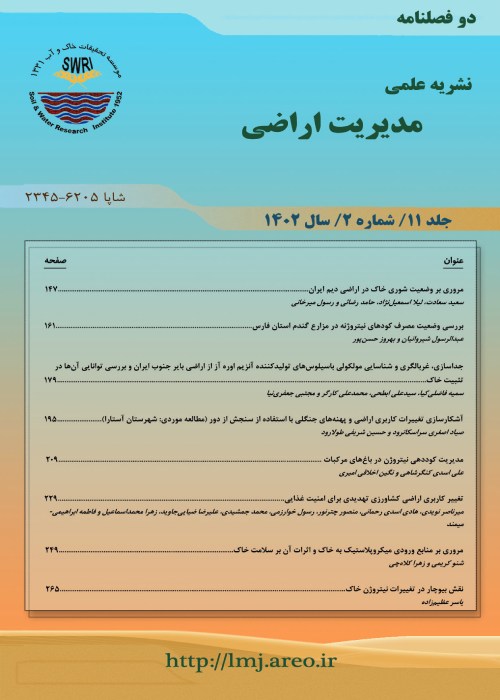Production Potential Modeling and Quantitative Land Evaluation for Wheat Cultivation in Calcareous Soils (The Case of Southern Behbahan)
Land evaluation and production potential modeling are essential for determining environmental production limitations and proper cultivation planning. It is the aim of the present study to estimate production potential using different regression models and to evaluate quantitatively land suitability for wheat cultivation in some calcareous soils south of Behbahan. To achieve these goals, semi-detailed soil studies of Sardasht region were performed to extract soil data for land evaluation. For qualitative assessment, the Sys Table and the square root parametric method were employed to define climatic and topographic specifications as well as soil conditions as the adaptability criteria for plant growth while unit yield and potential production were used as measures of quantitative assessment. Radiative thermal potential of wheat production, mean land production potential as determined by the square root method, and mean farmer production were measured to be 7121, 3885, and 3255 kg.ha-1 respectively, so that management level in most farms was categorized as intermediate (S2) while only 5% of the land farms were classified as non-suitable (N). It was concluded that the current decline in crop performance in some land units could be attributed to such limiting factors as lime, texture, salinity, and alkalinity. Production potential modeling by the standard and stepwise regression methods revealed coefficients of determination equal to 0.84 and 0.82 and standard errors (ME) of 0.52 and 0.59, respectively. This is while coefficients of determination calculated via the second- and third-degree estimation curve methods for linear modeling were 0.90, 0.91, and 0.92 with the corresponding standard errors of 0.51, 0.50, and 0.50, respectively. The third-degree estimation curve method that draws upon the FAO growth model to predict crop performance, therefore, seems to outperform the standard and stepwise regression models that only takes into account the effects of land characteristics and the observed performance. Thus, the proposed methods were found effectively capable of identifying production limitations of the lands in the study area for use in the optimal management and production potential modeling of wheat as a strategic crop in the region.
- حق عضویت دریافتی صرف حمایت از نشریات عضو و نگهداری، تکمیل و توسعه مگیران میشود.
- پرداخت حق اشتراک و دانلود مقالات اجازه بازنشر آن در سایر رسانههای چاپی و دیجیتال را به کاربر نمیدهد.



